 «Home
«Home «Home «Home |
WINTERBOURNE
South Gloucestershire
|
|
We have not updated this page since we posted posted it in 2007.
You'll find more recent information on the official Friends of Ram Hill Colliery website.The Ram Hill Colliery site
The Ram Hill Colliery site in Coalpit Heath is a fine example of early nineteenth century coal mining. It was once the hub of 19th century coal mining in Westerleigh parish.
Dating to around 1830 the site is located at the heart of the North Bristol Coal Field and holds the standing remains of the Steam Engine House, the Horse Gin, the Mine Shaft, the Dramway Terminus and, in all probability, the Water Reservoir and Boiler House - all of which can tangibly explain how coal was mined during the Industrial Revolution of Britain and for many local people it forms a link to their family history.
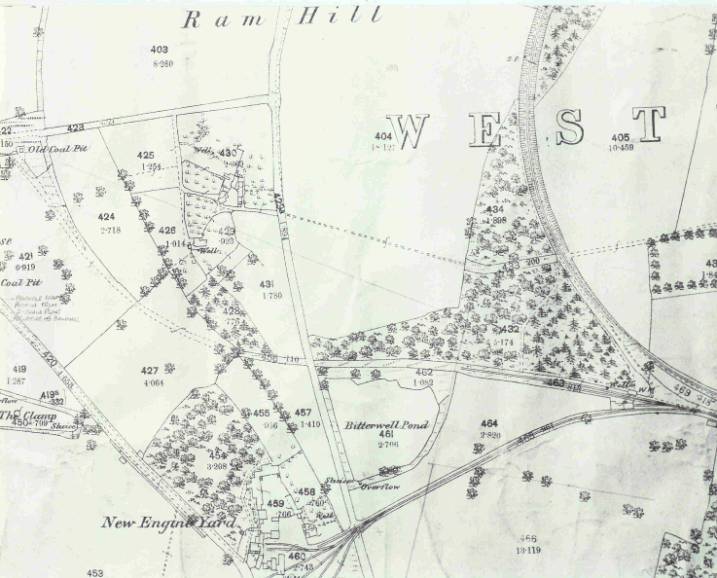
Early Ordnance Survey map of the siteIt was the terminus of the Dramway, which was built in 1828 and was probably the last railway in England designed to use horses as a means of propulsion (the Rainhill trials the following year heralded the use of steam).
It is a mystery why the Dramway ended here. A number of plans exist showing the proposed route of the Dramway, but none showed it ending up at Ram Hill. This conundrum, and others, have been revealed in a new study.The fact that the site survives at all is a fluke. The Great Western Railway bought the area for its new direct route from South Wales to London. In the end the cutting stopped just north of the site. The mine lay forgotten until 1981 when a local archaeologist, John Cornwell, rediscovered it. The first trial work was carried out in 1984. Then the high unemployment of the 1980s led to a number of job creation schemes, one of which was to carry out comprehensive work at the site. This took place in 1987-8, but funds ran out and it was never completed.
These pictures showing excavations on the Ramhill Colliery site in 1984 have been kindly provided by Bob Martin, a local resident who took part in the 1984 and 1987-88 excavations. The photographs are similar to a set in the Sites and Monuments Record of South Gloucester Council and are believed to be part of the same set. The photographer is currently (Dec 2007) not known but may well be Bob Martin.
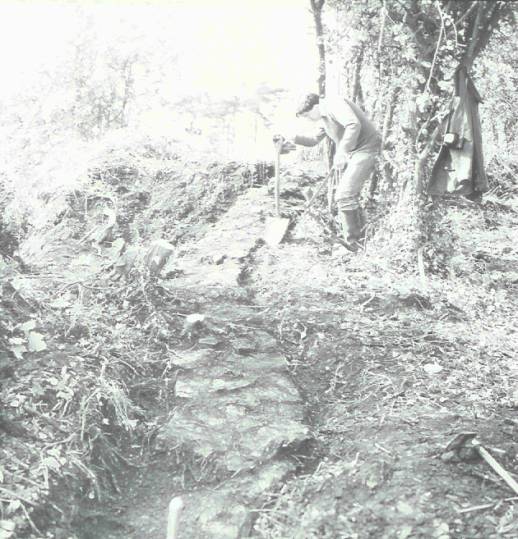
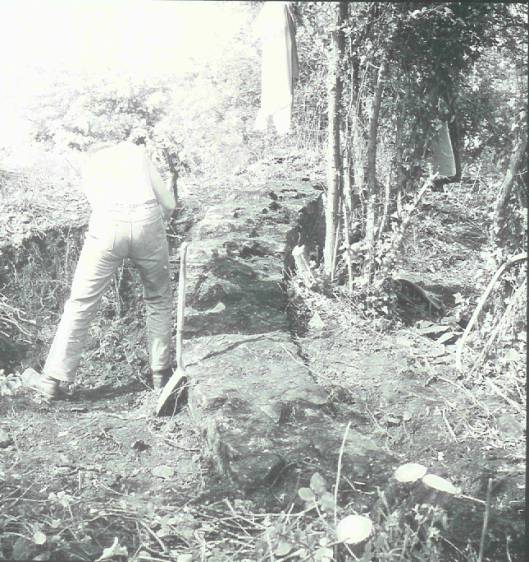
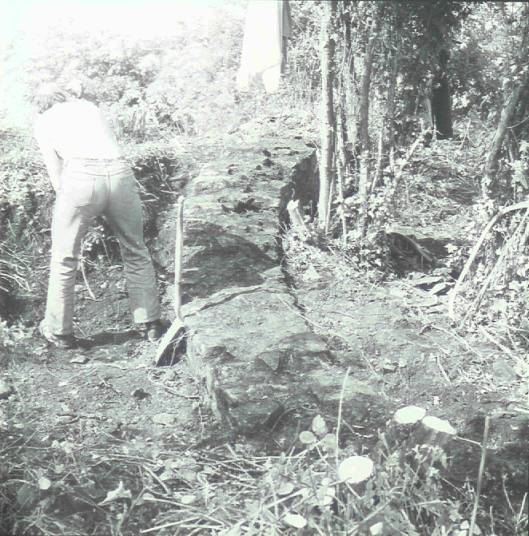
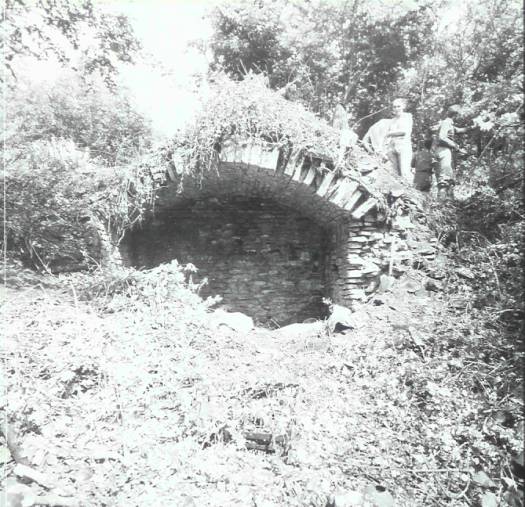
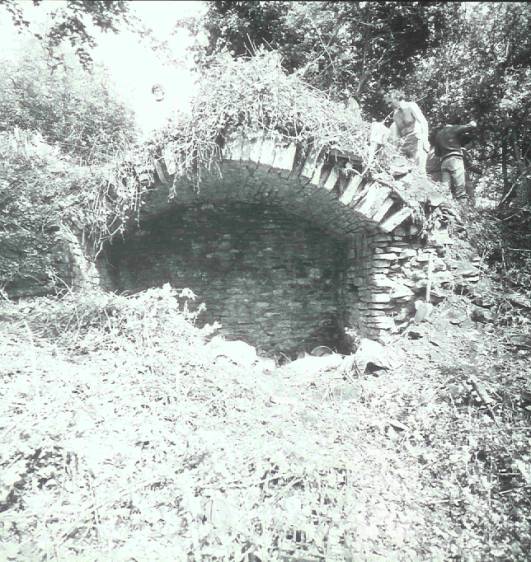
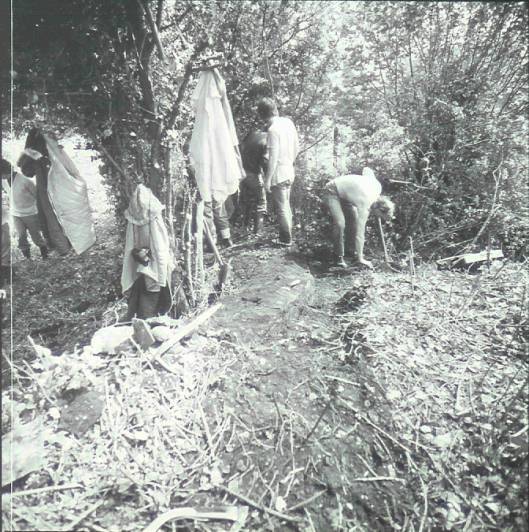
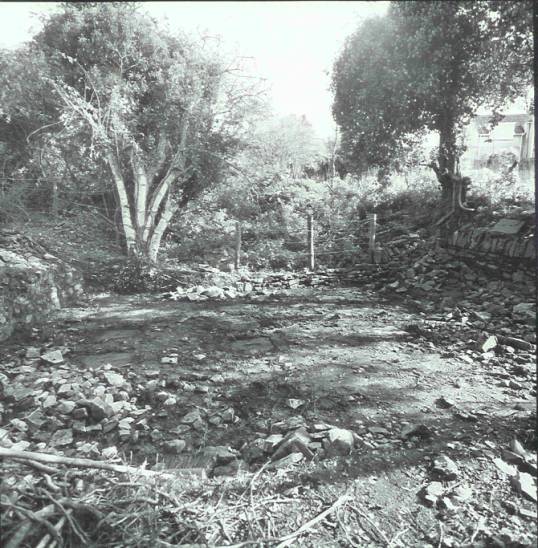
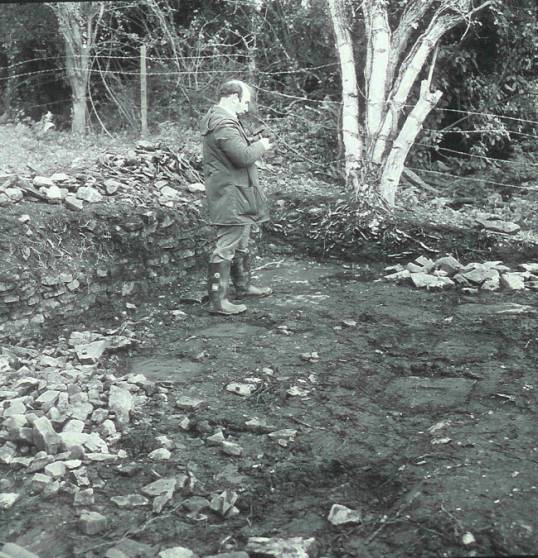
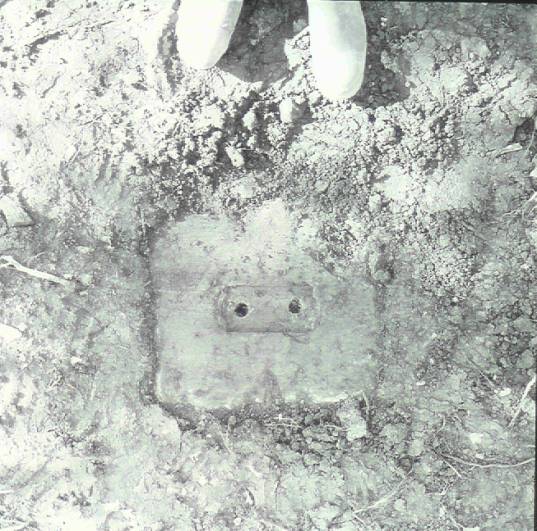
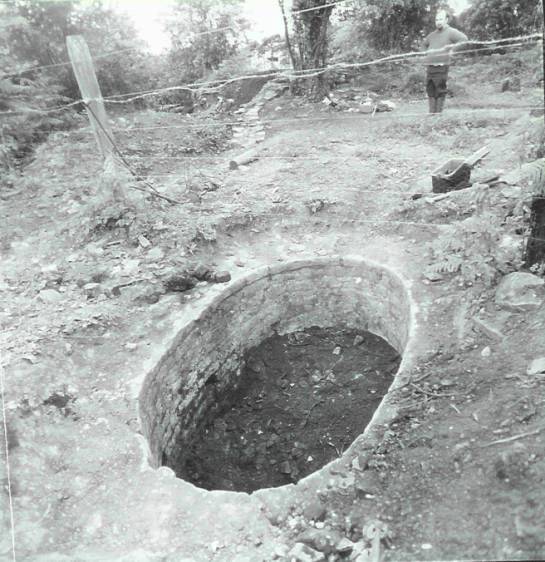
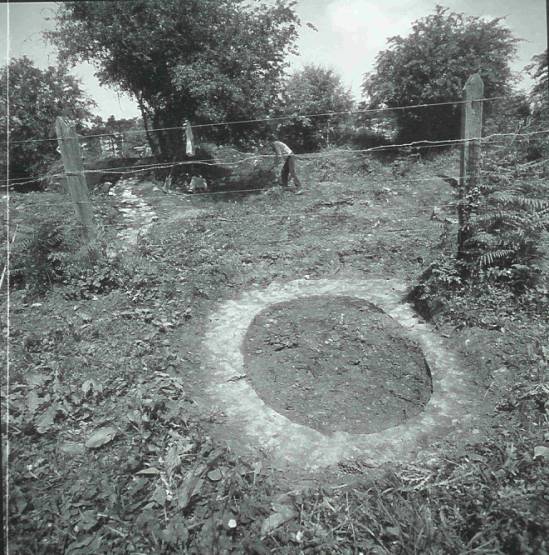
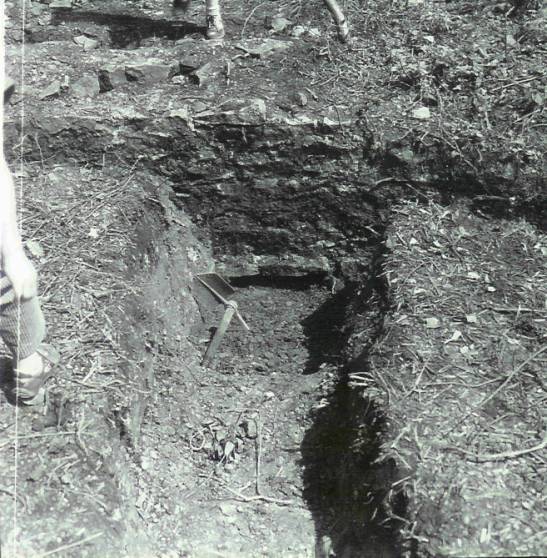
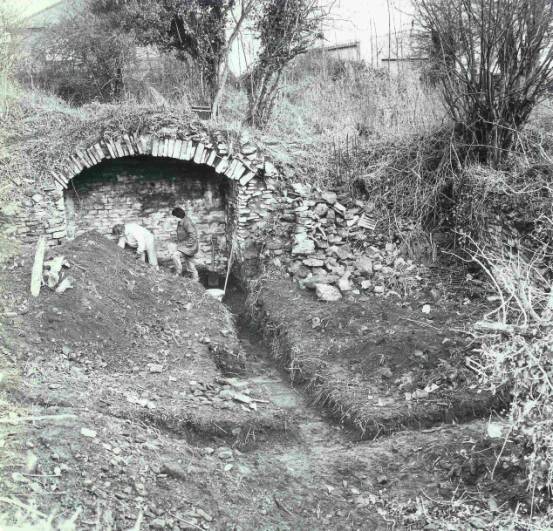
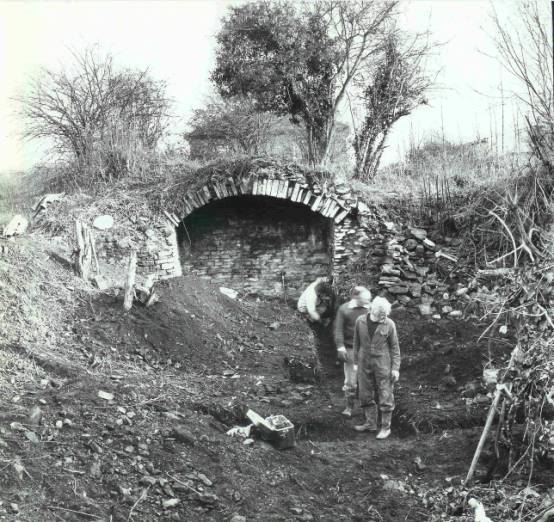
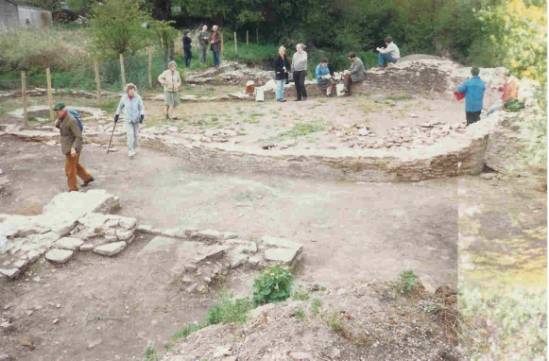
BIAS visit to Ram Hill, 30 April 1988Then a Bristol University MA student, Bridget Hetzel, embarked on a study there, and volunteers came in to help clear the site.
Bridget Hetzel with Trevor Thompson (a local historian) on site, 2004
Recent Excavations
The results of recent excavations have been spectacular: it has already been cleared of recent growth, and two spoil heaps which were formed during earlier excavations are being removed. This will expose more of the Dramway, hopefully including the boiler house for the steam engine.A geophysical survey at Ram Hill Colliery has revealed clear traces of a reservoir in the northern corner of the site. The method of remote sensing was restivity, which had not been expected to give good results due to the nature of the ground. It was carried out for the Friends of Ram Hill Colliery by local enthusiasts Sagascan. The results will be used to inform those conserving the site.
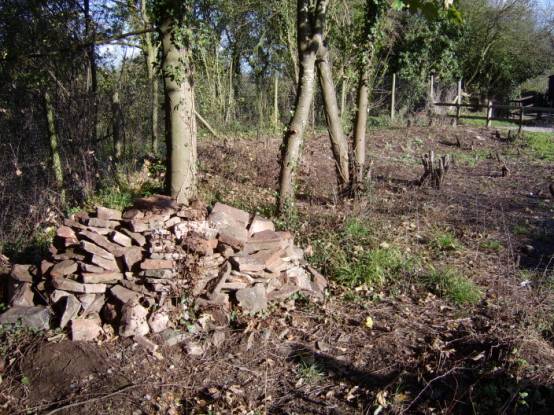
Reservoir areaPreserving the site
We are well on the way to securing the long-term management of the site. We hope to maintain a balance between archaeology and ecology by maintaining it as a grassed area.
In 2006 the Ram Hill Colliery site was given Ancient Monument Scheduling Status by English Heritage. This recognises the national importance of the site and protects the site for the future.
Scheduled Monument site plan
We are also preparing a bid to the Heritage Lottery Fund, and have established a Friends Group. A new website is being set up.
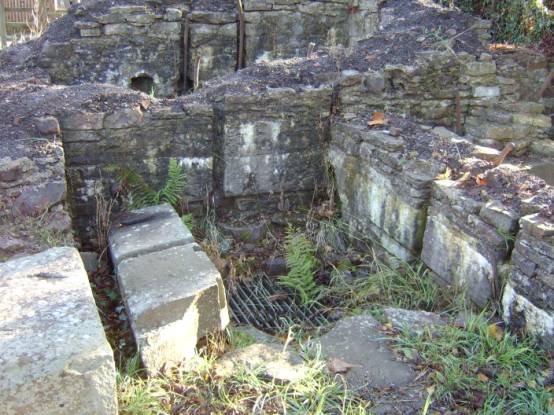
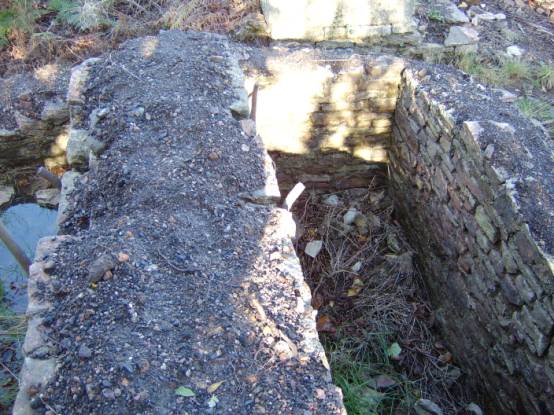
Two views of the engine house
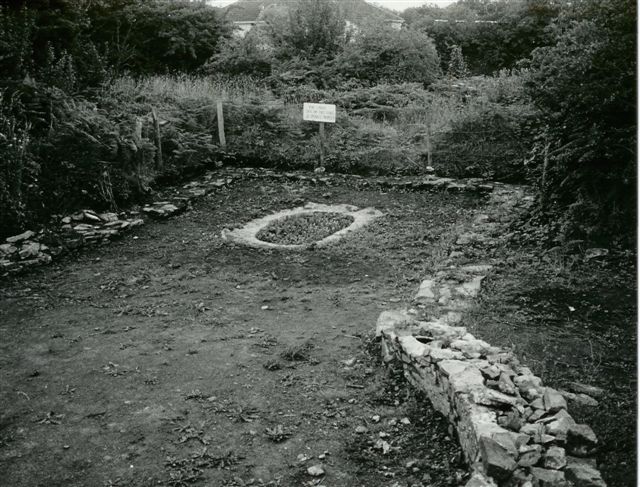
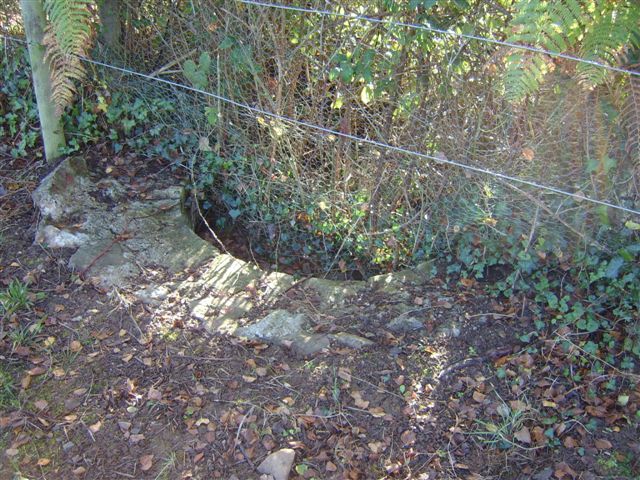
Two views of the shaft
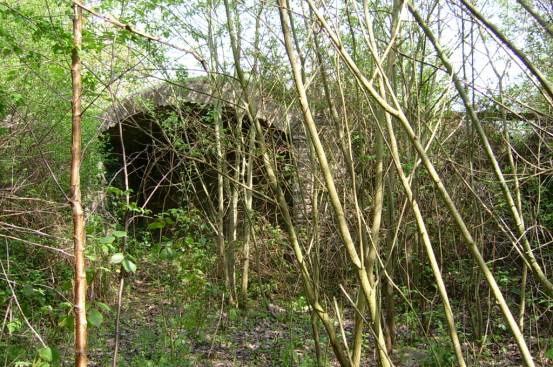
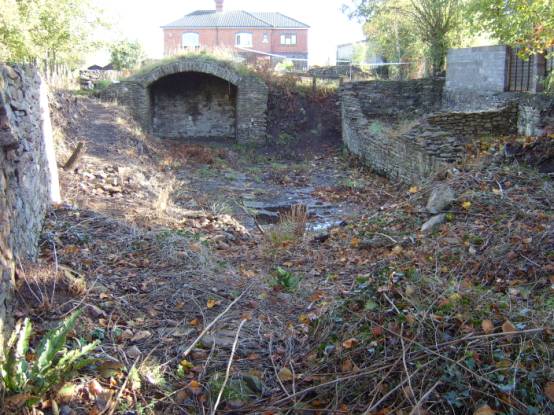

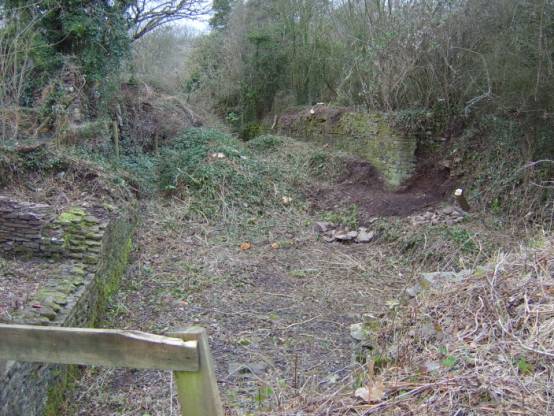
Dramway before and after clearanceThe work of the Friends of Ram Hill Colliery (and why we need your help!)
During the last two years the Friends of Ram Hill have cleared this historical site of trees, scrub and ivy to reveal the standing archaeology.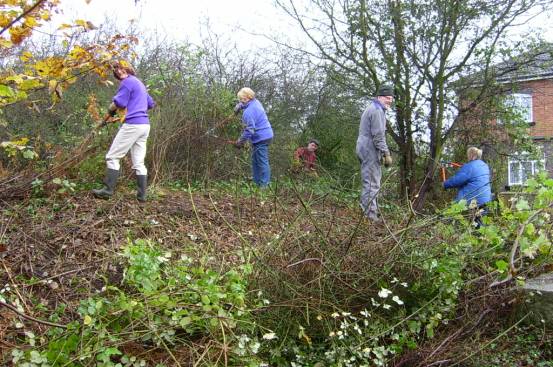
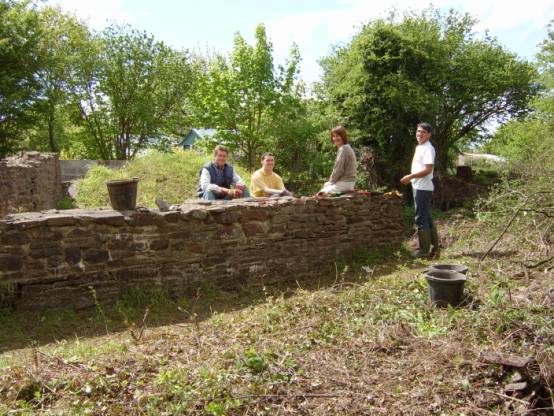
Volunteer work in progress!A detailed site report and conservation plan has been prepared.
Plan of the Ram Hill site
Open days for visitors have been arranged, as well as workdays for members to maintain the site. Schools and history groups have also visited the site.
.
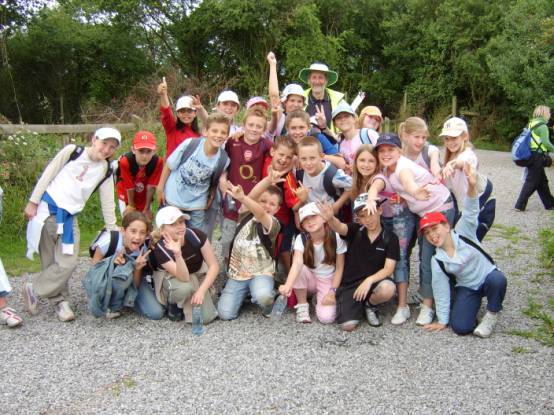
A visit from Manor School!Part of the work of the Friends of Ram Hill Committee has been to raise a substantial sum through grants to further conserve the standing archaeology that is showing signs of deterioration. Grants have been applied for but further funding is required and we need new members with new ideas to take the project forward. The aim is to proceed to further consolidation and restoration of the site to create a pleasant and tranquil area that presents the story of the Colliery in a pleasant and interesting manner.
Your views on what you would like to see happen to the site are important. Without support there is a risk that the site will become overgrown again and this important local resource lost.
Newspaper report on progress at Ram Hill
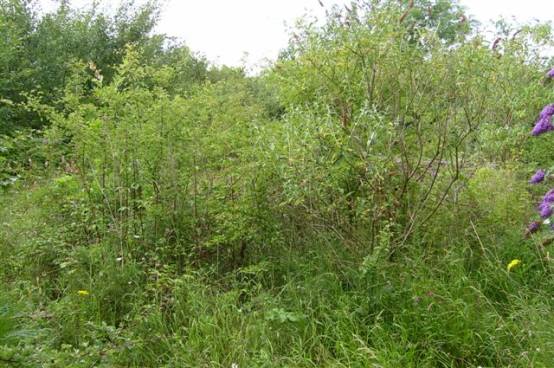
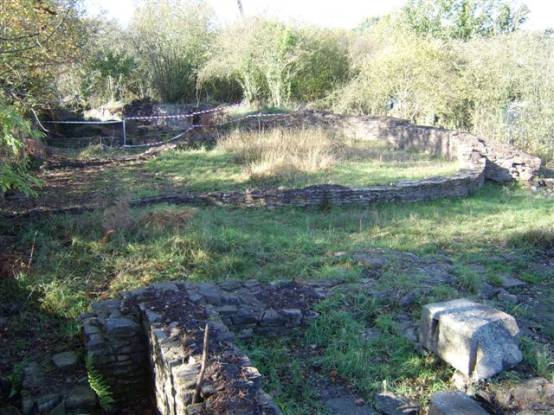
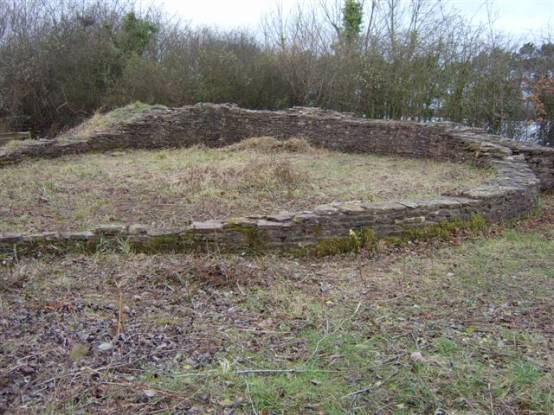
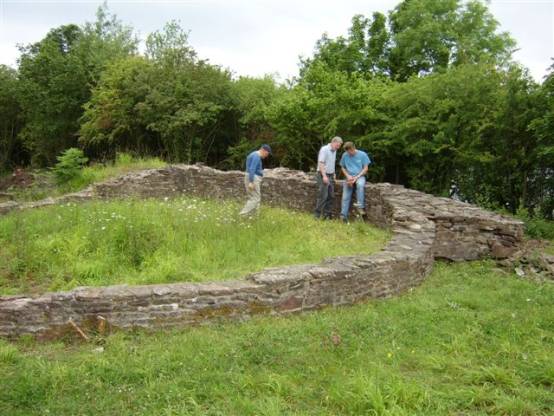
Stages in uncovering the Horse gin